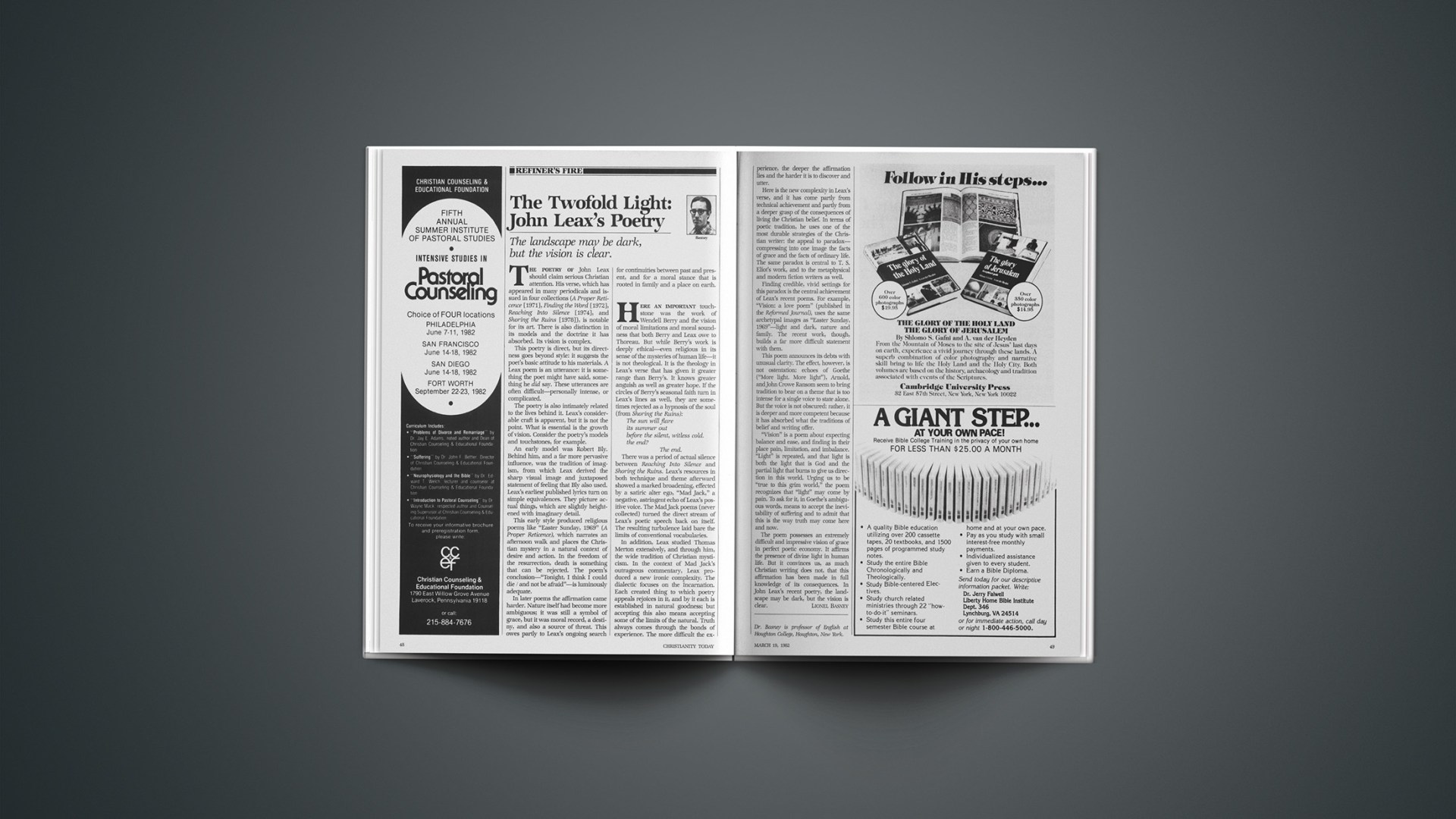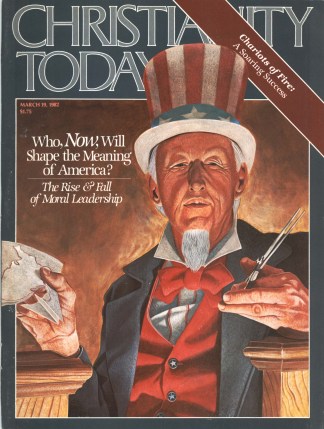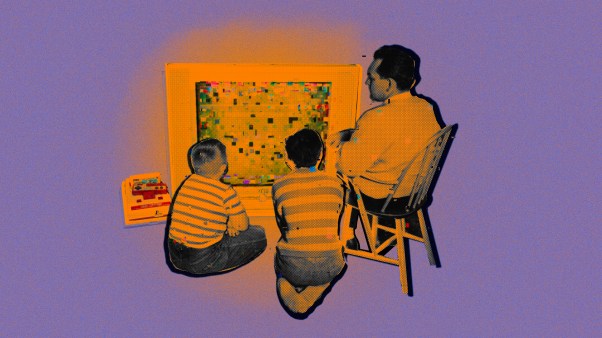The poetry of John Leax should claim serious Christian attention. His verse, which has appeared in many periodicals and issued in four collections (A Proper Reticence [1971], Finding the Word [1972], Reaching Into Silence [1974], and Shoring the Ruins [1978]), is notable for its art. There is also distinction in its models and the doctrine it has absorbed. Its vision is complex.
This poetry is direct, but its directness goes beyond style: it suggests the poet’s basic attitude to his materials. A Leax poem is an utterance: it is something the poet might have said, something he did say. These utterances are often difficult—personally intense, or complicated.
The poetry is also intimately related to the lives behind it. Leax’s considerable craft is apparent, but it is not the point. What is essential is the growth of vision. Consider the poetry’s models and touchstones, for example.
An early model was Robert Bly. Behind him, and a far more pervasive influence, was the tradition of imagism, from which Leax derived the sharp visual image and juxtaposed statement of feeling that Bly also used. Leax’s earliest published lyrics turn on simple equivalences. They picture actual things, which are slightly heightened with imaginary detail.
This early style produced religious poem$ like “Easter Sunday, 1969” (A Proper Reticence), which narrates an afternoon walk and places the Christian mystery in a natural context of desire and action. In the freedom of the resurrection, death is something that can be rejected. The poem’s conclusion—“Tonight, I think I could die / and not be afraid”—is luminously adequate.
In later poems the affirmation came harder. Nature itself had become more ambiguous; it was still a symbol of grace, but it was moral record, a destiny, and also a source of threat. This owes partly to Leax’s ongoing search for continuities between past and present, and for a moral stance that is rooted in family and a place on earth.
Here an important touchstone was the work of Wendell Berry and the vision of moral limitations and moral soundness that both Berry and Leax owe to Thoreau. But while Berry’s work is deeply ethical—even religious in its sense of the mysteries of human life—it is not theological. It is the theology in Leax’s verse that has given it greater range than Berry’s. It knows greater anguish as well as greater hope. If the circles of Berry’s seasonal faith turn in Leax’s lines as well, they are sometimes rejected as a hypnosis of the soul (from Shoring the Ruins):
The sun will flare
its summer out
before the silent, witless cold.
the end?
The end.
There was a period of actual silence between Reaching Into Silence and Shoring the Ruins. Leax’s resources in both technique and theme afterward showed a marked broadening, effected by a satiric alter ego, “Mad Jack,” a negative, astringent echo of Leax’s positive voice. The Mad Jack poems (never collected] turned the direct stream of Leax’s poetic speech back on itself. The resulting turbulence laid bare the limits of conventional vocabularies.
In addition, Leax studied Thomas Merton extensively, and through him, the wide tradition of Christian mysticism. In the context of Mad Jack’s outrageous commentary, Leax produced a new ironic complexity. The dialectic focuses on the Incarnation. Each created thing to which poetry appeals rejoices in it, and by it each is established in natural goodness; but accepting this also means accepting some of the limits of the natural. Truth always comes through the bonds of experience. The more difficult the experience, the deeper the affirmation lies and the harder it is to discover and utter.
Here is the new complexity in Leax’s verse, and it has come partly from technical achievement and partly from a deeper grasp of the consequences of living the Christian belief. In terms of poetic tradition, he uses one of the most durable strategies of the Christian writer: the appeal to paradox—compressing into one image the facts of grace and the facts of ordinary life. The same paradox is central to T. S. Eliot’s work, and to the metaphysical and modern fiction writers as well.
Finding credible, vivid settings for this paradox is the central achievement of Leax’s recent poems. For example, “Vision: a love poem” (published in the Reformed Journal), uses the same archetypal images as “Easter Sunday, 1969”—fight and dark, nature and family. The recent work, though, builds a far more difficult statement with them.
This poem announces its debts with unusual clarity. The effect, however, is not ostentation: echoes of Goethe (“More fight. More fight”), Arnold, and John Crowe Ransom seem to bring tradition to bear on a theme that is too intense for a single voice to state alone. But the voice is not obscured: rather, it is deeper and more competent because it has absorbed what the traditions of belief and writing offer.
“Vision” is a poem about expecting balance and ease, and finding in their place pain, limitation, and imbalance. “Light” is repeated, and that light is both the light that is God and the partial light that burns to give us direction in this world. Urging us to be “true to this grim world,” the poem recognizes that “light” may come by pain. To ask for it, in Goethe’s ambiguous words, means to accept the inevitability of suffering and to admit that this is the way truth may come here and now.
The poem possesses an extremely difficult and impressive vision of grace in perfect poetic economy. It affirms the presence of divine light in human life. But it convinces us, as much Christian writing does not, that this affirmation has been made in full knowledge of its consequences. In John Leax’s recent poetry, the landscape may be dark, but the vision is clear.
Dr. Basney is professor of English at Houghton College, Houghton, New York.










